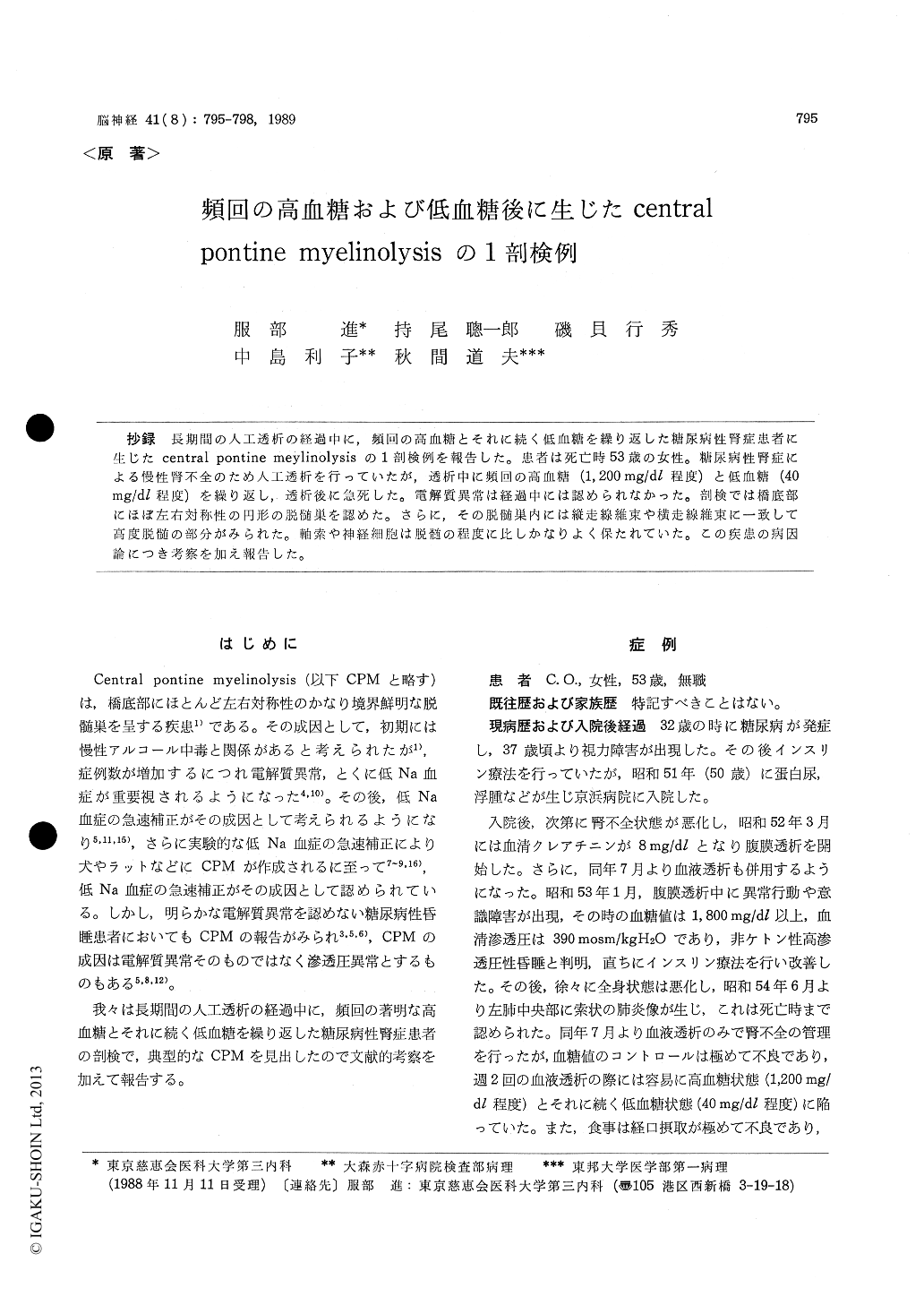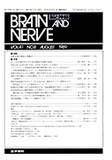Japanese
English
- 有料閲覧
- Abstract 文献概要
- 1ページ目 Look Inside
抄録 長期間の人工透析の経過中に,頻回の高血糖とそれに続く低血糖を繰り返した糖尿病性腎症患者に生じたcentral pontine meylinolysisの1剖検例を報告した。患者は死亡時53歳の女性。糖尿病性腎症による慢性腎不全のため人工透析を行っていたが,透析中に頻回の高血糖(1,200mg/dl程度)と低血糖(40mg/dl程度)を繰り返し,透析後に急死した。電解質異常は経過中には認められなかった。剖検では橋底部にほぼ左右対称性の円形の脱髄巣を認めた。さらに,その脱髄巣内には縦走線維束や横走線維束に一致して高度脱髄の部分がみられた。軸索や神経細胞は脱髄の程度に比しかなりよく保たれていた。この疾患の病因論につき考察を加え報告した。
A case of central pontine myelinolysis (CPM) followed by hyperglycemia and hypoglycemia was reported. The case was 53-year-old female. Dia-betes mellitus was found when she was 32 years old, insulin therapy was started at 37 years of age. Since she was 50 years old, proteinuria and ankle edema had developed and she was admitted to The Keihin Hospital. The peritoneal dialysis (PD) was performed next year, followed by the hemodialysis (HD). In January 1978, strange movements and the disturbance of her consciousness were occured during PD, then blood glucose level showed over 1, 800 mg/dl and serum osmolarity was over 390 mosm/KgH2O. Then she was diagnosed as non-ketatic hyperosmolar coma. After that, during HD and PD, hyperglycemia (approximately 1, 200 mg/ dl) and hypoglycemia (approximately 40 mg/dl) de-veloped frequently. She died soon after HD on 19 th December 1979. The autopsy disclosed bila-teral atrophic kidneys due to diabetic changes and atrophic pancreas. Gross neuropathological find-ings revealed a few small infarcts at the putamen and the globus pallidus, however, other area were observed to be normal. The most remarkable chan-ge in microscopical finding was nearly symmetri-cal demyelinative lesion in the center of the basis pontis. The nerve cells and axon cylinders were relatively well preserved in the demyelinative le-sion. The hyaline degeneration was observed in the arterial wall, however, any arterial obstruction was not found. Recent studies would suggest that the electrolyte disturbance, such as hyponatremia, may lead to CPM, particularly when this distur-bance was rapidly corrected. On the other hand, CPM induced by diabetic coma has been reported, however, its pathogenesis has been unclear. It was considered that CPM of this case was induced by the disturbance of serum osmolarity resulted from hyperglycemia following hypoglycemia.

Copyright © 1989, Igaku-Shoin Ltd. All rights reserved.


